-
How to Improve Your Indoor Air Quality
You take lots of different steps to protect your health and the health of your family, but did you know that one of the biggest health threats might be the air inside of your home? According to the EPA, the average indoor environment is up to five times more toxic than outside air, and in some cases indoor air pollution has been found to be 100 times worse. Fortunately, there are some simple steps you can take to improve the air quality inside your home and protect your family from the negative health effects of indoor air pollution.
Get Your Home Tested
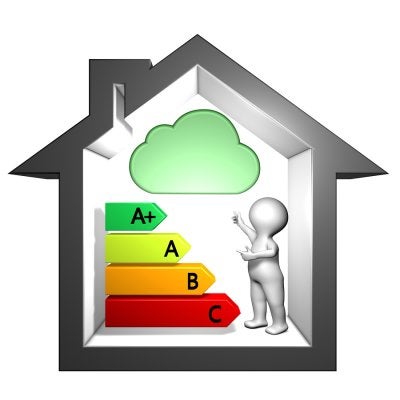
First and foremost, you should know just how bad the air quality is inside your home. Air testing services in San Francisco can test your indoor air quality so you know exactly what type of contaminants and pollutants you need to eliminate or get under control. Testing services can also detect the presence of dangerous particles such as mold, asbestos, and lead.Ensure Proper Ventilation
One of the best things you can to do in order to improve your home’s indoor air quality is ensure that your home is properly ventilated . For example, make sure that all fuel-burning appliances are vented to the outside well away from windows and HVAC intakes to eliminate breathing in toxic combustion fumes. When weather permits, open doors and windows to air out your home with fresh air.Minimize Chemical Pollutants
Some of the leading contributors of indoor air pollution are the chemicals people use every day. To improve the air quality inside your home, minimize the use of harsh cleaning chemicals and most all aerosol sprays. You should also look for low-emitting products that have been certified and labeled by reputable organizations such as Green Seal. Manufacturer claims of “no VOC” or “eco-friendly” should be inspected and verified before you use said product in your home. -
Removing Lead-Based Paint
If you live in older home, it’s important that you make sure there are no traces of lead-based paint that can cause anyone in your family to become sick from lead poisoning. A full lead-based paint survey will identify remnants of lead-based paint in your home. After you receive confirmation of lead paint in your home , you will need to take steps to remove the paint in order to limit exposure. Although lead-paint removal is best left to a professional remediator, there are things you can to do eliminate the threat in your own home.
Watch this video to learn about the proper way to dispose of lead paint. You’ll learn about the personal safety equipment you should wear when removing lead-based paint, and how to safely dispose of lead paint after it’s been removed from your home. You’ll also learn about other steps you can take after discovering lead paint in your home, such as painting over with a specially-formulated encapsulation paint.
-
Understanding Lead Toxicity and Poisoning
Lead-based paint and lead-contaminated dust are the most common sources of lead poisoning in children and adults, despite the fact that such paints have been banned for residential use since 1978. If you live in an older residence, it’s recommended that you schedule a lead inspection in San Francisco to determine whether this toxic heavy metal is present inside your home. However, lead-based paint isn’t the only source of lead poisoning. To protect yourself and your family, read this short blog to learn more about lead toxicity and to recognize the signs of lead poisoning.
Signs and Symptoms of Lead Poisoning
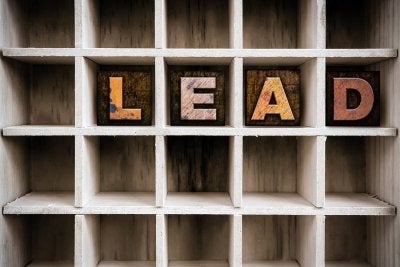
Initially, and at small doses, lead poisoning can be hard to detect, especially in health children and adults. Because the most recognizable signs of lead poisoning usually don’t appear until dangerous amounts have accumulated inside the body, seek medical attention if you recognize the following chronic symptoms in yourself or your family:- Abdominal pain
- Mood disorders
- Constipation
- Muscle pain
- Headache
- Memory loss
- Hearing loss
- Sluggishness and fatigue
Lead Poisoning Risk Factors
Although lead is harmful to all humans at high enough doses and over long enough periods of time, there are certain factors that can increase one’s risk of becoming lead poisoned. Infants and young children, for example, are more likely to be exposed to lead than adults and absorb the heavy metal more easily. People who live in homes or apartment buildings that were built before 1980 are also at risk of prolonged exposure to lead through the remnants of lead-based paints.Lead Poisoning Prevention
Children and adults are most frequently exposed to dangerous levels of lead inside older homes, which is why you should schedule a lead-based paint inspection with an environmental testing company in San Francisco before doing any remodeling or touch-up work in an older house that may contain lead paint. If your home has older plumbing containing lead pipes or fitting, run the cold water for at least one minute before using and avoid using the hot water tap to make baby formula or for cooking. -
A Look at Our Bacteria Testing Services
Bacteria is everywhere, and although a vast majority of bacteria are not harmful to humans, certain kinds of bacteria can make you extremely sick. The most dangerous type of bacterial presence in most households is typically those bacteria that are found in sewage water. That’s why it’s important to schedule bacteria testing and remediation following a toilet backup or burst sewage pipe in your home. In San Francisco, Safe Air Fast provides bacteria testing in accordance with standards established by the Institute of Inspection, Cleaning and Restoration (IICRC).
First, we will take air and surface samples to identify the presence and determine the concentration of harmful bacteria in your home. After you hire a remediation company to remove the bacteria from your home, we will perform a post-bacteria remediation clearance assessment to determine if the cleaning efforts were successful. If we confirm the presence of harmful bacteria after remediation, you will need to consult with the remediator to perform additional cleaning. We will provide you with a copy of our test samples to assist you when dealing with an unsuccessful remediator.

-
A Look at the Most Common Types of Household Mold
Mold is everywhere, but the last place it should be is inside your home. Although there are only a few types of mold that can cause very serious health problems, no amount of indoor mold is good for or your family. Unfortunately, considering how humid the Bay Area and the general condition of the homes and buildings in the vicinity, household mold is a common problem in San Francisco. To protect your health and the health of your family, schedule mold testing with an indoor environment testing company in the Bay Area. Technicians will perform a number of different tests to confirm or deny the presence of various different types of harmful indoor molds, including:
Aspergillus
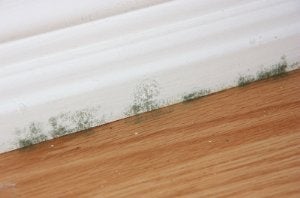
Aspergillus is one of the most common environmental molds. In fact, the Centers for Disease Control and Prevention claims that most people breathe in these fungal spores every day. Although Aspergillus exposure isn’t harmful for people with healthy immune systems, people with weakened immune systems can develop sinus or lung infections which can spread to other parts of the body.Cladosporium
Another common mold in the environment, Cladosporium is usually found on plants and other organic matter outdoors. Indoors, this type of mold can grow in areas where moisture is consistently present, such as in bathrooms and laundry rooms. Although Cladosporium rarely causes human illness, it is known to cause several different types of infections, including brain infections.Stachybotrys Chartarum
The most notorious (and dangerous) of all common household molds, Stachybotrys chartarum is a greenish-black mold that typically grows on materials with a high cellulose and low nitrogen content, such as fiberboard, gypsum board, and paper. Also known as “ toxic black mold ,” Stachybotrys chartarum can cause nausea, vomiting, bleeding in the lungs, and more serious health effects with prolonged exposure. -
Removing Mold in Your Attic
Are you experiencing mold symptoms but having trouble finding the source of them? If your attic isn’t insulated properly, the warm air you use to heat your home in the wintertime could be getting trapped up there and causing mold to grow. Watch this video to see how professionals complete mold remediation near San Francisco in attics.
When warm air is allowed to enter your attic and hit your cold roof during the winter, a frost will often appear on the inside of your roof. This frost can create the perfect environment for mold to grow quickly, which will eventually cause mold symptoms in those who live in your home. A mold testing company can test for the mold and help you get rid of it. You should then insulate your attic in order to stop the mold from returning.
-
Why Hire a Company that Only Does Air Quality Inspection? [Infographic]
You may not usually give much thought to the air you breathe inside your home, but there are pollutants that could be harming you and your family without you even knowing it. Homes built before 1983 could have asbestos, which can lead to difficulty breathing, lung scarring, and cancer. Lead paint was used widely in residential homes before 1978, and lead is toxic to both humans and animals. Symptoms of mold exposure in San Francisco include allergies, sore throats, memory loss, and other serious issues. Instead of putting your health at risk, hire a company that performs just air quality inspections. In addition to having the expertise to get the job done right, this type of company will have no conflict of interest, as they will have nothing to gain from altering your results. Check out this infographic to learn more about hiring an air quality inspection company. Please share with your friends and neighbors.

-
What Every Homeowner Should Know About Asbestos
If you own an older home, then you are probably aware of the fact that it may contain asbestos. You are also likely aware of the health-related issues that you will have if you are exposed to asbestos for a prolonged period of time. It’s why you should have asbestos testing done on your home. But what else do you know about asbestos? Check out some of the other things all homeowners should know about asbestos exposure near San Francisco.
You Cannot See Asbestos
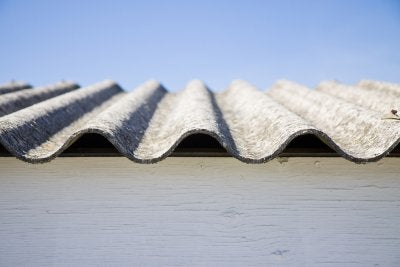
Some homeowners are under the assumption that they can see asbestos if it exists in their homes. This is simply not true. The only way that you can detect asbestos is through asbestos testing. Asbestos is a mineral fiber, but the fiber is so tiny that people cannot see it. So rather than try and guess whether or not you may have asbestos in your home, you should hire a certified company to come in and do an asbestos test if you suspect that asbestos might be located in your house.There Is No Safe Level of Asbestos
The scary thing about asbestos is that you can be negatively affected by breathing in just a small amount of it. Most often, homeowners will come into contact with asbestos during home renovation projects. By sawing or drilling into a product made with asbestos, you can disturb it and send asbestos fibers into the air. These fibers will create health problems if they find their way into your lungs.Asbestos Can Be Found in Many Parts of the Home
You might think that asbestos is only found in basements or in crawlspaces and that you won’t be exposed to it if you don’t spend much time in them. However, everything from roofing shingles to textured paint to air duct lining can contain asbestos. Therefore, it’s a good idea to have your home tested for asbestos anytime you take on a project that will involve you working on your house. It’s better to be safe than sorry when it comes to asbestos. -
Your Environmental Testing Options
The air inside of your home might not be as clean as you think it is. You shouldn’t wait for asbestos, lead, or mold symptoms to show up before you have asbestos, lead, or mold testing in San Francisco done. Safe Air Fast specializes in environmental testing and uses state-of-the-art equipment to find mold, lead, asbestos, and other harmful contaminants inside your home.
Many older homes in San Francisco contain asbestos and lead that can cause serious health risks. Often times, homeowners don’t even realize they have either of them until they are suffering the consequences. Mold is another big issue for those who have excessive moisture in their homes, which is particularly problematic in a damp city like San Francisco. But people often wait until mold symptoms show up before seeking help with possible mold growth. When you contact Safe Air Fast, we will perform an asbestos, lead, or mold test in your home and give you the peace of mind that comes along with it.

-
A Closer Look at the Most Common Types of Household Mold
There are more than 100,000 types of mold located throughout the world, so if you own a home, there’s a good chance that you will have to deal with at least one of them at some point. While many types of mold are non-toxic and won’t cause any health-related problems, you should keep an eye out for mold symptoms and remove mold as quickly as possible to avoid the risks associated with it. Here are the most common types of mold that homeowners will find during a mold inspection in San Francisco .
Aspergillus
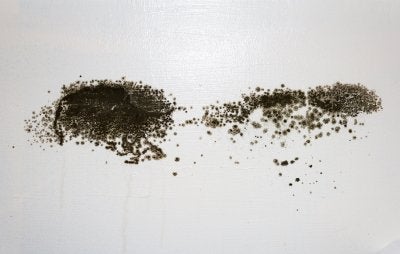
Do you have bad allergies? If so, you’re going to want to monitor the presence of this type of mold in your home. It is most commonly found inside of air conditioning systems as well as on foods, and it can cause severe allergic reactions for those who have allergies or diseases of the lungs. Because it can grow inside of air conditioning units, it can also spread throughout homes fairly quickly and cause problems for those with allergies.Cladosporium
This type of mold is not toxic to humans but, much like aspergillus mold, it can cause allergic reactions in some people. It is black and green, looks a little bit like pepper, and grows on everything from air ducts to the back of toilets. It has been known to cause watery eyes, sore throats, and other flu-like mold symptoms in some people.Stachybotrys Atra
This is by far the worst type of mold that you can find inside of your home. It is commonly referred to as black mold, and it can cause a series of very serious health issues. Specifically, black mold can cause bleeding of the lungs and, in some cases, it can even lead to death. If you even think you might have black mold in your home, you should have a mold test done immediately and then work to remove it from your home. Mold remediation should get rid of it and make the air in your home clean again.
RECENT POSTS
categories
- Uncategorized
- Lead
- Mold
- San Francisco Mold & Asbestos Removal
- Indoor Air Pollution
- Mold Remediation
- Asbestos
- Safe Air Fast
- Mold Inspection
- Remediation
- Bacteria Testing
- Asbestos Testing
- Abatement
- Lead Testing
- Sewer Line
- Lead Survey
- Mold Testing
- Air Quality Inspection
- Home renovations
- Allergies
- Renovation Contractor
- Infographic
- lead paint
- Air Quality
- Air Quality Test
- Mold removal
